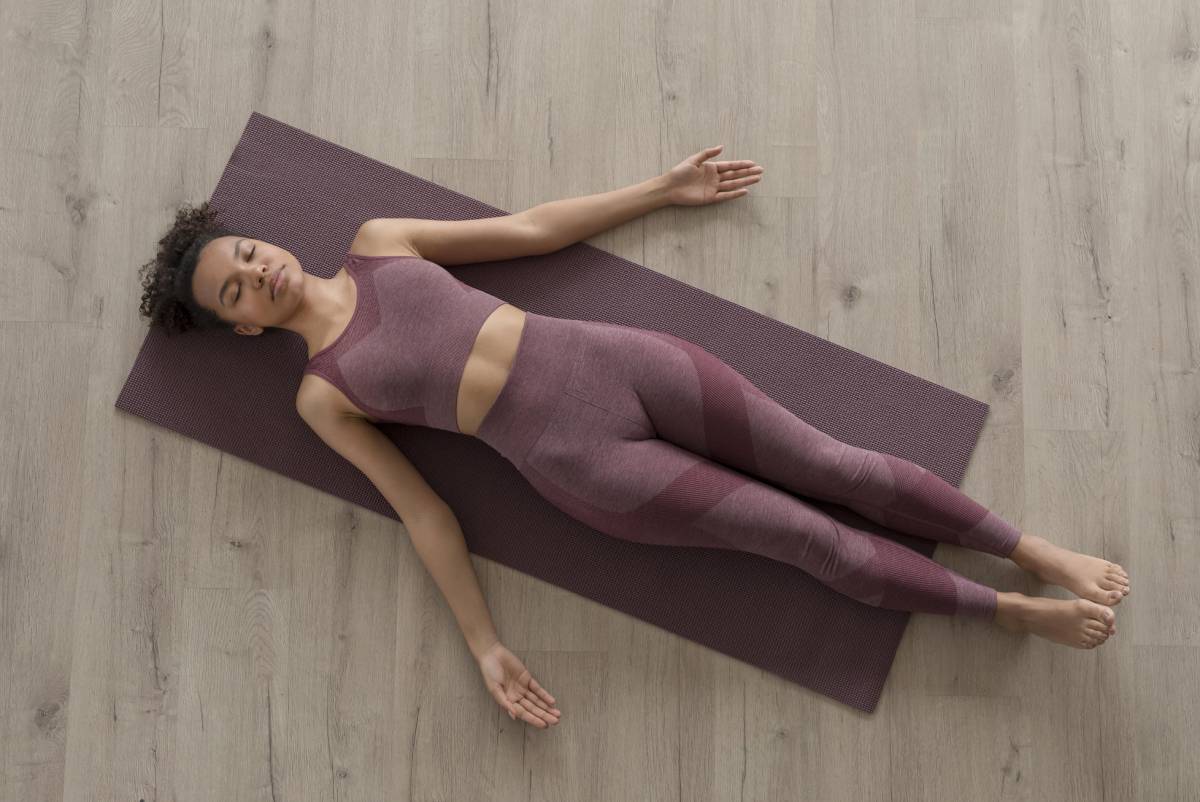TL;DR
Somatic yoga is a slow, mindful yoga practice that focuses on internal sensation over external appearance. It helps relieve chronic tension, regulate the nervous system, and improve body awareness. Unlike typical yoga styles, somatic yoga is gentle, trauma-informed, and accessible to people of all ages and physical abilities. It’s especially helpful for anxiety, stress relief, and emotional healing. This guide explains what it is, its benefits, and how to get started.
What Is Somatic Yoga?
Somatic Yoga blends gentle yoga postures, slow movement, and body awareness to calm the nervous system and reconnect mind and body.
- The word “somatic” comes from the Greek word soma, meaning the living body as experienced from within.
- Movements are slow, simple, and focused on how you feel — not on reaching perfect form.
- It’s rooted in neuroscience and somatic therapy, making it effective for chronic pain, trauma, and emotional stress.
Think of somatic yoga as less about doing yoga and more about feeling into your body with awareness.
Where Did Somatic Yoga Come From?
Somatic yoga is part of a wider field called somatics, a movement approach that focuses on the mind-body connection.
- Heavily influenced by Thomas Hanna, who created Hanna Somatics — a therapeutic movement method for retraining the nervous system.
- Integrates elements of classic yoga, body awareness practices, and mindfulness.
- It’s often used in trauma-informed yoga, somatic therapy, and rehabilitation settings.
You’ll often hear it described as “yoga from the inside out.”
How It’s Different from Regular Yoga
| Feature | Traditional Yoga | Somatic Yoga |
|---|---|---|
| Focus | External alignment, poses | Internal sensations, movement patterns |
| Pace | Medium to fast | Very slow and mindful |
| Repetition | Minimal | Repetitive, neuromuscular retraining |
| Goal | Flexibility, strength | Nervous system regulation, healing |
| Instruction Style | Instructor-led cues | Self-led awareness and exploration |
Conclusion: Somatic yoga isn’t about stretching deeper — it’s about feeling more deeply.
Benefits of Somatic Yoga
1. Relieves Chronic Muscle Tension
- Gently retrains muscles to release rather than contract.
- Helps with neck pain, back pain, and postural issues.
- Ideal for people stuck in “fight or flight” patterns.
2. Regulates the Nervous System
- Activates the parasympathetic nervous system (“rest-and-digest”).
- Reduces stress, anxiety, and emotional reactivity.
- Makes you feel more grounded and emotionally present.
3. Improves Body Awareness (Proprioception)
- You learn your body’s habits, holding patterns, and needs.
- Supports better movement, balance, and self-care.
- Important for healing from trauma stored in the body.
4. Restores Natural Mobility
- Gently improves joint range of motion.
- No forced stretching or pushing limits.
- Movements are safe for injury recovery or limited mobility.
5. Supports Trauma Recovery
- Trauma can disconnect people from bodily sensations.
- Somatic yoga uses slow, structured movement to rebuild safety and trust in the body.
- Often used in trauma-informed therapy or mental health care plans.
Who Can Benefit from Somatic Yoga?
Somatic yoga is ideal for:
- Seniors or people with limited mobility
- Stressed professionals looking to relax
- Beginners who feel intimidated by traditional yoga
- People with anxiety, depression, or PTSD
- Those recovering from injury, chronic pain, or illness
- Anyone wanting to feel more at home in their body
You don’t need flexibility or yoga experience to start. You just need a willingness to slow down.
How to Start Practicing Somatic Yoga
If you’re new to somatic yoga, it’s best to start simple. Here’s a five-step beginner plan:
1. Begin With Breath Awareness
- Sit or lie comfortably.
- Keep your eyes closed and feel your natural breath.
- Don’t try to control it — just notice where you feel it: chest, belly, nose?
Why? Breath is a reliable bridge between your body and nervous system.
2. Try Gentle, Repetitive Movements
Examples might include:
- Slow pelvic tilts
- Shoulder shrugs
- Head or neck rolls
- Spine waves while lying on your back
📝 Focus on how each movement feels, not how it looks.
3. Pause Between Movements
- Take 5–10 seconds to rest after each exercise
- Notice changes in sensation, tension, or breath
These rest periods help your brain integrate new movement habits.
4. Use Guided Resources
- Online somatic yoga classes (YouTube, apps, or teacher-led platforms)
- Programmes led by trauma-informed yoga teachers
- Books and PDFs with step-by-step poses
🎧 Bonus: Some apps offer audio-only classes for deeper internal focus.
5. Start Small and Stay Consistent
- 10–15 minutes per day is enough to begin.
- You’ll notice benefits more through frequency than length.
Avoid pushing yourself. This is about releasing, not achieving.
Example Somatic Yoga Movements
These are simple movements often included in a beginner somatic sequence:
Pelvic Tilts
- Lie on your back with knees bent.
- Gently rock the pelvis forward and back.
- Loosens tension in the lower back and hips.
Shoulder Rolls
- Seated or lying down.
- Slowly roll shoulders up, back, and down.
- One side at a time often works better for awareness.
Diaphragmatic Breathing
- Deep belly breathing sends safety signals to your brain.
- Try counting “inhale-2-3-4 / exhale-2-3-4″ to help anchor focus.
Cat-Cow Spinal Movement (Somatic Version)
- Move spine and pelvis slowly, one section at a time.
- Unlike fast Yoga Flow, go slow enough to feel every shift in sensation.
Tips to Get the Most Out of Somatic Yoga
- Let Go of Goals: Somatic yoga is not a “workout.” It’s a wake-up for the nervous system.
- Use a Soft Surface: Think yoga mat + blanket for comfort.
- Journal After Sessions: Track observation, tension patterns, or mood shifts — it enhances learning.
- Integrate It Into Daily Life: Waiting in line? Feel your feet on the ground. That’s somatics in action.
- Practice Compassion Over Control: Your body doesn’t need to be fixed. It needs to be felt and heard.
When to Work With a Professional
Consider working with a certified teacher or yoga therapist if you:
- Have PTSD or a history of trauma
- Manage serious chronic pain or neurological issues
- Need personalized support during recovery
- Want to integrate somatics into your therapy or rehab plan
Look for credentials in Somatic Experiencing, Yoga Therapy (C-IAYT), or Trauma-Informed Yoga.
Final Thoughts: A Return to Yourself
Somatic yoga isn’t about flexibility, posture, or performance. It’s about tuning in. Whether you feel burnt out, anxious, or simply disconnected from your body, this practice offers a quiet space to explore healing — one gentle movement at a time.
It reminds you: your body isn’t broken. It’s trying to communicate.




